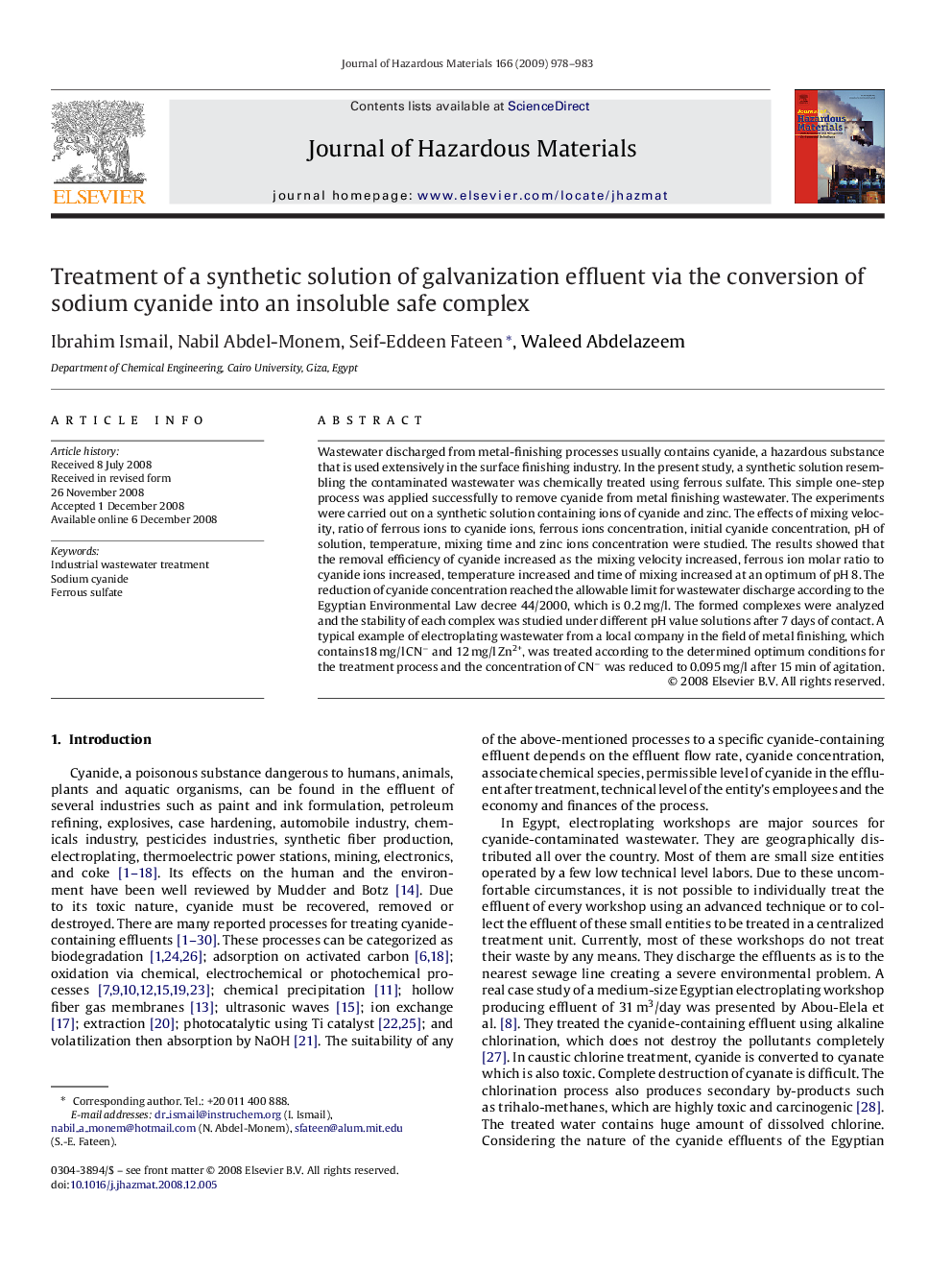| Article ID | Journal | Published Year | Pages | File Type |
|---|---|---|---|---|
| 582041 | Journal of Hazardous Materials | 2009 | 6 Pages |
Abstract
Wastewater discharged from metal-finishing processes usually contains cyanide, a hazardous substance that is used extensively in the surface finishing industry. In the present study, a synthetic solution resembling the contaminated wastewater was chemically treated using ferrous sulfate. This simple one-step process was applied successfully to remove cyanide from metal finishing wastewater. The experiments were carried out on a synthetic solution containing ions of cyanide and zinc. The effects of mixing velocity, ratio of ferrous ions to cyanide ions, ferrous ions concentration, initial cyanide concentration, pH of solution, temperature, mixing time and zinc ions concentration were studied. The results showed that the removal efficiency of cyanide increased as the mixing velocity increased, ferrous ion molar ratio to cyanide ions increased, temperature increased and time of mixing increased at an optimum of pH 8. The reduction of cyanide concentration reached the allowable limit for wastewater discharge according to the Egyptian Environmental Law decree 44/2000, which is 0.2 mg/l. The formed complexes were analyzed and the stability of each complex was studied under different pH value solutions after 7 days of contact. A typical example of electroplating wastewater from a local company in the field of metal finishing, which contains18 mg/l CNâ and 12 mg/l Zn2+, was treated according to the determined optimum conditions for the treatment process and the concentration of CNâ was reduced to 0.095 mg/l after 15 min of agitation.
Related Topics
Physical Sciences and Engineering
Chemical Engineering
Chemical Health and Safety
Authors
Ibrahim Ismail, Nabil Abdel-Monem, Seif-Eddeen Fateen, Waleed Abdelazeem,
